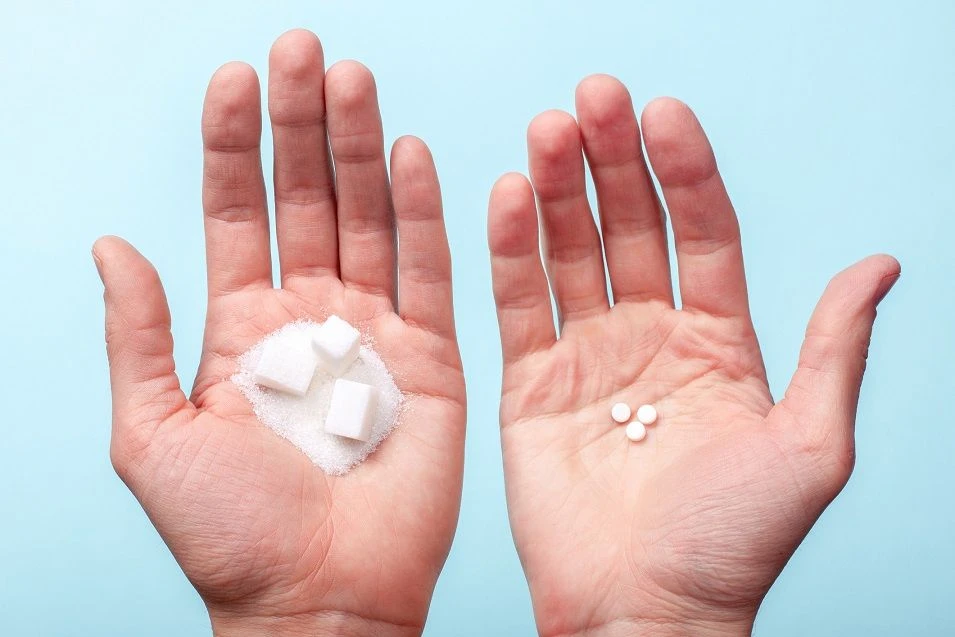reviewed by Truman Perkins
It can be a challenge for even experienced cooks to substitute artificial sweeteners for sugars without compromising food quality or palatability. An artificial sweetener may be suitable for reducing the caloric content and glycemic index of a dish, but they lose their usefulness in many other culinary applications where a sugar is needed for more than its ability to sweeten.
Contents
In some instances, as when replacing sugars in drinks, the primary side effect of using an artificial sweetener may be the addition of a chemical or bitter aftertaste in the finished product. Sometimes this can be remedied by under-sweetening a dish slightly, or by adding herbs, seasonings, or ingredients like citrus that can disguise an unpleasant aftertaste. In baked goods, however, sugars perform more functions than sweetening, many of which are difficult for imitation sugars to imitate.

Sugars are a virtually indispensable aid to carmelization or browning, meaning that breads and cookies rely on the presence of sugars to help form a crisp crust and a golden brown exterior. Depending on the other ingredients in the recipe, a cookie made with an artificial sweetener may have a reasonably good flavor, but come out of the oven looking pale and unappetizing.
In yeast doughs, sugars are needed to feed the yeast which leavens the bread. While there are some natural sugars in wheat flour, they are not in sufficient quantity or in simple enough form to make them quickly usable to the yeast. Sugars also act as a humectant to help baked goods retain the moisture they need to remain soft and fresh.
Additionally, sugars inhibit microbial action and extend shelf life in foods. For products in which sugar is required for its preservative qualities, like jams and jellies, replacing sugar with an artificial sweetener can dramatically reduce a food’s shelf life.
Removing sugar from many sweets can also result in a compromised texture; for example, replacing the sugar in ice cream with an artificial sweetener (without the addition of other softening agents) can produce a frozen product that is full of ice crystals and unpleasantly hard.
In many regards agave nectar bridges the gap between real and artificial sweeteners. While it has all the useful properties of real sugars, its lower glycemic index helps protect against health risks associated with higher glycemic sweeteners.
Agave nectar can be used in many more applications than artificial sweeteners, while also producing more palatable results. Since it is composed of real sugars (fructose and glucose), agave nectar performs admirably in the kitchen and bakery. It matches refined sugars in all the qualities mentioned above, serving as a browning agent, a humectant, a softener, and a preservative.
 |
 |
 |
 |

About Truman Perkins
Truman Perkins is a Detroit-based SEO consultant who's been in the business for over a decade. He got his start helping friends and clients get their websites off the ground, and he continues to do so today. In his free time, Truman enjoys learning and writing about gardening - something he believes is a natural stress reliever. He lives with his wife, Jenny, and their twins in Detroit.
 |
 |
 |
 |
Get new FREE Gifts. Or latest free growing e-books from our latest works.
Disable Ad block to reveal all the links. Once done, hit a button below
 |
 |
 |
 |